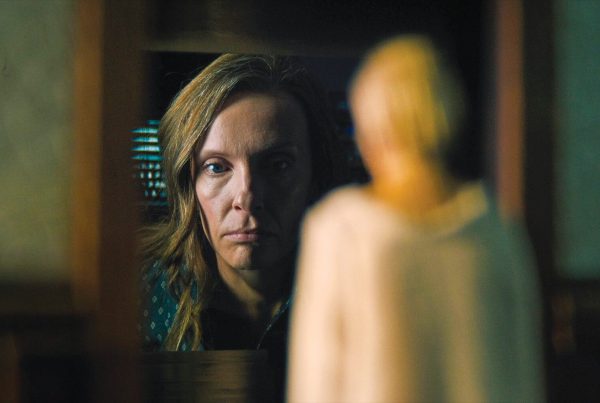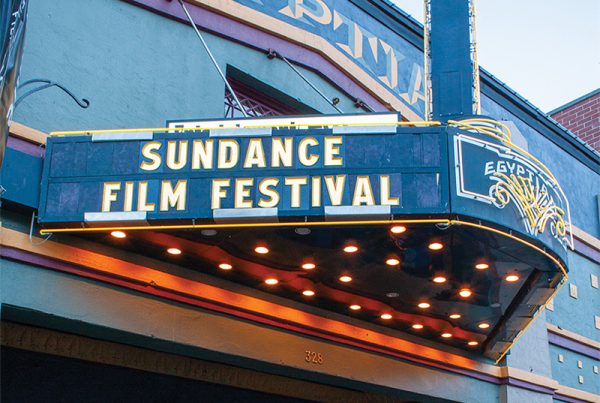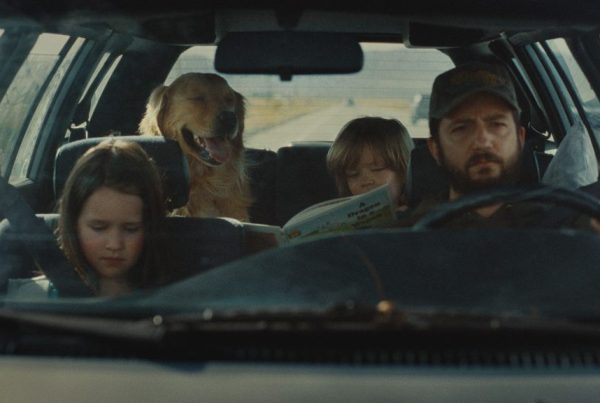
One benefit to a reviewer of Gary Hustwit’s innovative documentary Eno’s reported 52 quintillion possible versions is that there’s no possibility of spoilers. Practically, the film’s most significant feature is its constant reconfiguration at the digital hands of generative software Hustwit developed with artist Brendan Dawes, assuring that every showing will be different than the last. While Hustwit told his audience at the film’s premiere that this version had been fully rendered in advance, ideally the work should be assembled as it plays in real time. When you see Eno—and you must see it—you will experience a completely different film than I did, and—this is where one might feel some frustration at the process—you’ll likely see scenes that I didn’t see, just as I’ve seen things you won’t. Zooming in from the UK to participate in the post-film Q&A, Brian Eno suggested that the project operates like human memory, following a winding path of unpredictable associations to create a rich and complex but always incomplete, or unfinished, portrait.
In terms of content, the film is truly one of the most inspiring works on creativity that I’ve seen in some time. It helps, of course, that its subject is a tremendously likeable human being. Eno is pure delight as a guide to himself and his aesthetics, reflecting with great precision on and clear-eyed analysis of his development as a musician, a composer, a producer and a visual artist. Though he’s now in his 70s, Eno’s ultimately positive and relentlessly curious approach to innovation feels as fresh and essential as it would have (to those with ears) in his glam rock period with Roxy Music in the early 1970s. Back then, Eno tells us, his axe was the newly developed synthesizer because the technology interested him and he had no capacity to play any other instrument. That even now the producer of iconic works by David Bowie, The Talking Heads, U2, and many others cannot write with conventional musical notation and has little use for common compositional terms is a testament to the tremendous power and precision of Eno’s creative imagination and his capacity to communicate his original ideas through intuitive and organic approaches to rhythm, melody, sonic mimicry, and metaphor.
One thing Eno is not is sentimental. There’s a touch of comic, cringing regret as he wades through the material archives of past experiments that Hustwit has asked him to revisit. But there’s also evidence of lingering interest and pleasure, as when Eno finds some of his daughter’s drawings in an old notebook (“this was her abstract period”), or, when flipping over a mini-cassette featuring crude vocal experiments that make him laugh, he suddenly recognizes Bono working out the vocal style for 1984’s “Pride (In the Name of Love).” The rawness and emergent brilliance playing through the recorder’s tinny speaker arrest Eno, as if he’s hearing this music for the first time.
As we might expect from a more conventional documentary, this moment transitions into an extended, edited sequence of fascinating and revealing archival studio footage in which a younger Eno encourages and mildly provokes a notably shy Bono into the defiant vocal character that defines the song, the very character for which the U2 front man is best known. When Bono complains, somewhat meekly, later in the sequence, that “Pride” no longer feels “grand” due to a reduction in length, Eno’s simple suggestion to slow it down brings a song that’s become nearly unhearable today because of its ubiquity into a renewed focus for the viewer, and the band’s earnest expressions of pleasure and discovery (of themselves) is startlingly moving. This is not solely the doing of Brian Eno. It’s a vision of the joy of collaboration, risk, and emergence.
Given the power and effectiveness of such typical documentary moves applied to this material, one may well ask if the formal experiment with generative processes is as productive as it might be. Does it make the film great or is its most important contribution to evoke, rather than build on, Eno’s approach to composition? In my version—which, to be clear, will never be seen again—the film closed with a somewhat thin consideration of what Eno’s aesthetics offer art made in response to contemporary environmental collapse. There’s obvious and important potential here that simply isn’t as developed as an earlier sequence on Eno’s concept of surrender, for example. But then, in your version, maybe the environmental point will be adequately developed while surrender may not appear at all. That’d be unfortunate for you. But you win some, you lose some, and maybe the most beautiful aspect of Eno’s life-art project is that failure simply doesn’t exist. “Honor thy error as hidden intention,” reads one of Eno’s famous Oblique Strategies. You just keep asking questions—what is art? what does an artist do? what have we never heard before? where have we never been before?—and the work keeps on going, shifting, growing, not becoming better necessarily, just more and more interesting.






